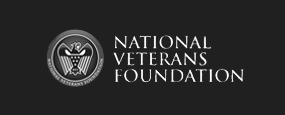November
Experiencing War - Hispanic in Service
Written by Super UserExperiencing War - Hispanic in Service
Stories from the Veterans Hispanic Project
Whatever their individual backgrounds before they came to serve their country, the Hispanics in these collections all found opportunities without impediments by donning the uniforms of the Army, Navy, Air Force, and Marines. Some, like Joseph Medina, came from a family with a rich military background; others, like Eva Jacques or Raymond Ayon, were students enticed with the notion that their country needed them. None expressed that even a hint of prejudice marked their experiences, a remarkable testimony to the democratic ideal of military service.
For more information visit this link: http://www.loc.gov/vets/stories/ex-war-hispanicveterans.html
November
Afghanistan: Operation Enduring Freedom (OEF) / Iraq: Operation Iraqi Freedom (OIF) Following the September 11, 2001, terrorist attacks on the World Trade Center and the Pentagon, the United States responded by deploying military personnel in Southwest Asia. By January 2002, more than 30,000 active duty were involved and additional reserve personnel continue to be called to duty.
As a result of Iraq’s refusal to comply with United Nations’ mandates, U.S. began deploying troops to the Gulf region in late 2002. Coalition forces subsequently won a decisive victory against the forces under the regime of Saddam Hussein, during April 2003, in Operation Iraqi Freedom (OIF). Coalition forces remain in Iraq today as part of ongoing peacekeeping/nation-building activities.
Currently, as part of Operation Enduring Freedom (OEF), U.S. troops are on the ground in Afghanistan, Pakistan, and neighboring countries of the former Soviet Union.
Afghanistan - Operation Enduring Freedom (OEF)
On September 11, 2001 the United States of America was the victim of a series of suicide bombings. Nineteen members of a terrorist organization boarded commercial passenger airplanes, hijacked them, and subsequently crashed them into the Twin Towers of the World Trade Center and into the Pentagon. Following the attacks, it was discovered that Al-Qaeda, an extremist Islamic militant group, was responsible for these acts of violence. Osama Bin Laden, the terrorist group’s leader, was rumored to be hiding in Afghanistan, where he trained and armed men to perform terrorist acts. While 15 of the 19 people accused of the hijackings were from Saudi Arabia, Afghanistan was chosen as a battle ground because it housed many terrorist training grounds and was a meeting place for terrorists around the world.
The United States government immediately responded to these acts of terrorism by giving Afghanistan an ultimatum. The Taliban did not comply with the demands of the ultimatum and on October 7, 2001 Operation Enduring Freedom (OEF) was launched. The stated goals of OEF became ousting the Taliban regime, which was harboring Al-Qaeda, capturing and prosecuting Osama Bin Laden and other leaders of Al-Qaeda, and permanently destroying Al-Qaeda’s organizational capacities. The first objective, removing the Taliban from governmental power, was easily accomplished by a joint effort of US and British forces. Also, several top leaders of Al-Qaeda have been found and either prosecuted or killed. The remaining goals have proved much more difficult because the nature of the warfare has turned to counterinsurgency. Since the Taliban was eradicated, a power vacuum has been created which is being filled by US forces and the International Assistance Security Force (ISAF). US officials fear that if they leave this power vacuum will be filled with counterinsurgents and Afghanistan will once again become a safe haven for terrorists. The United States remains in Afghanistan, and is likely to remain until a strong central government, capable of enforcing stability, can be established.
Iraq - Operation Iraqi Freedom (OIF) Iraq War
The United States, with the aid of Great Britain, launched Operation Iraqi Freedom on March 20, 2003. Prior to the conflict there was speculation as to whether or not Iraq possessed weapons of mass destruction (WMD). In 2002, The United Nations Security Council, demanded full access from the Iraqi government to ensure that they possessed no weapons of mass destruction. The United Nations found no verification of weapons of mass destruction when they searched Iraq, but evidence was said to be inconclusive.
After OIF began, the search for WMD continued, but no such weapons were ever found. Another justification for Operation Iraqi Freedom was that Saddam Hussein had ties to Al-Qaeda and coordinated the September 11th terrorist attacks with the organization. No evidence of a connection was ever found between Hussein and Bin Laden or Al-Qaeda. The last justification for the attack was that the people of Iraq were being oppressed by Hussein, and The United State’s goal was to free these civilians. Due to the controversial nature of the invasion justification, the Iraq war was protested against in many European countries.
Despite the controversy surrounding the entrance into the war, the initial attack was very successful. With the help superior weapons, technology, and leadership the U.S. military, with the help of their British allies, quickly and soundly defeated the Iraqi military. Saddam Hussein and his brothers went into hiding and Hussein was later found, tried, and executed.
Once the official Iraqi military was defeated, insurgents began fighting U.S. troops who they felt were wrongfully occupying their country. Old religious tensions between Shiite and Sunni Muslims were ignited and violence continued. Iraq is still unstable and The United States remains in the country for purposes of security and nation building. U.S. officials want to make sure that the new Iraqi government will be capable of retaining stability and that the insurgents will not come into power when troops leave. Recently there has been improvement in the situation; the Iraqi government is taking increasingly more responsibility for security measures and daily governance. In 2009 U.S. President Barack Obama laid out a withdrawal plan, which would tentatively have U.S. forces out of the country by the end of 2011.
Learn more about Unique Health Risks for OEF/OIF.
OEF/OIF Related Resources
U.S. Dept of Veterans Affairs (link is external) - Information about OEF/OIF.
Hazardous Exposure (link is external) - Information on chemical, radiation, physical and environmental hazards during military service, possible health-related problems and VA benefits.
Returning Service Members (OEF/OIF) (link is external) – Benefits information for returning services members from OEF/OIF.
Iraq War Veterans' Illnesses (link is external)- Information about health problems associated with military service during Operation Iraqi Freedom and Operation New Dawn and related VA benefits.
Afghanistan War Veterans' Illnesses (link is external)- Information about health problems associated with military service during Operation Enduring Freedom and related VA benefits.
Hepatitis C Virus Research and Education (link is external) – Information about Hepatitis C Virus.
Veterans Health Initiative (link is external) – Independent study courses to help health providers care for their Veteran patients.
National Center for PTSD (link is external) - The Center aims to help U.S. Veterans and others through research, education, and training on trauma and PTSD.
Women Veterans Health Care (link is external) – Information about and answers to some of the most freq (link is external)
For more information please visit: http://www.wehonorveterans.org/veterans-their-needs/needs-war-or-trauma/afghanistan-and-iraq-oef-oif
November
Veterans Day - November 2014
During the month of November we remember those men and women that have served our Country. As part of such important time, I am please to provide you with a link that showcase all the Hispanic-American Veterans that have given their life for us.
Please visit: http://homeofheroes.com/e-books/mohE_hispanic/index.html
HAVOCT Inc.
Website Master
November
HONOR & FIDELITY
Do you wish to read an outstanding book? Please read HONOR & FIDELITY "The 65th Infantry in Korea, 1950–1953" The author Col. (RET) Gilberto N. Villahermosa. (http://www.history.army.mil/html/books/korea/65Inf_Korea/65Inf_KW.pdf)
Foreword
Originally formed at the turn of the nineteenth century to protect America's strategic interests in the Caribbean, the 65th Infantry was composed of locally recruited Puerto Rican soldiers led primarily by non-Hispanic "continental" officers. Although in existence for almost fifty years, the 65th had not experienced intense combat until it was committed to the Korean peninsula in the initial months of the war. There, despite its lack of previous wartime service, the regiment did extremely well from September 1950 to August 1951, establishing a solid reputation as a dependable infantry unit and a mainstay of the heavily embattled 3d Infantry Division. After that period, however, its performance began to suffer as experienced cadre rotated out of the regiment and were replaced by new leaders and soldiers who lacked the skills and special cohesive bonds displayed by their predecessors. The net result was a highly publicized series of incidents and disciplinary actions that have never been adequately explained or understood.
This study reviews the performance of the 65th Infantry throughout the war, providing insights not only into the regiment's unique problems but also into the status of the U.S. Army's combat forces during one of the most trying periods in its history. Its findings underscore the critical impact of personnel-rotation policies, ethnic and organizational prejudices, and the work of small-unit leaders on combat readiness and battlefield success.They also illustrate the critical role of senior leaders in analyzing problems in these areas in a timely fashion and instituting effective reforms. For the 65th, a catastrophic shortage of trained NCOs, unaddressed language problems, and inept command leadership temporarily undermined its combat effectiveness. Making matters worse, senior commanders reacted in a heavy-handed manner with little analysis of what was really going on. In the end, it was the martial traditions of the 65th's Hispanic soldiers and a host of new leaders willing to address its special problems that pulled the unit through.
The regiment's colors remained in Korea until November 1954, when the unit returned to Puerto Rico. Today, the 1st Battalion of the 65th Infantry remains as part of the Puerto Rican National Guard, a testimony to a unique combat unit that served the United States Army well for over one hundred x years. Yet, what has sometimes been called the Forgotten War is still rich in lessons that the Army of today can ill afford to forget if it is to succeed on the battlefields of tomorrow.
Washington, D.C. Jeffrey J. Clarke
2 June 2009 Chief of Military History
November
On June 25, 1950, the Korean War began when some 75,000 soldiers from the North Korean People’s Army poured across the 38th parallel, the boundary between the Soviet-backed Democratic People’s Republic of Korea to the north and the pro-Western Republic of Korea to the south. This invasion was the first military action of the Cold War. By July, American troops had entered the war on South Korea’s behalf. As far as American officials were concerned, it was a war against the forces of international communism itself. After some early back-and-forth across the 38th parallel, the fighting stalled and casualties mounted with nothing to show for them. Meanwhile, American officials worked anxiously to fashion some sort of armistice with the North Koreans. The alternative, they feared, would be a wider war with Russia and China–or even, as some warned, World War III. Finally, in July 1953, the Korean War came to an end. In all, some 5 million soldiers and civilians lost their lives during the war. The Korean peninsula is still divided today.
The Two Koreas
“If the best minds in the world had set out to find us the worst possible location in the world to fight this damnable war,” U.S. Secretary of State Dean Acheson (1893-1971) once said, “the unanimous choice would have been Korea.” The peninsula had landed in America’s lap almost by accident. Since the beginning of the 20th century, Korea had been a part of the Japanese empire, and after World War II it fell to the Americans and the Soviets to decide what should be done with their enemy’s mperial possessions. In August 1945, two young aides at the State Department divided the Korean peninsula in half along the 38th parallel. The Russians occupied the area north of the line and the United States occupied the area to its south.
The Korean War and the Cold War
Even so, the North Korean invasion came as an alarming surprise to American officials. As far as they were concerned, this was not simply a border dispute between two unstable dictatorships on the other side of the globe. Instead, many feared it was the first step in a communist campaign to take over the world. For this reason, nonintervention was not considered an option by many top decision makers. (In fact, in April 1950, a National Security Council report known as NSC-68 had recommended that the United States use military force to “contain” communist expansionism anywhere it seemed to be occurring, “regardless of the intrinsic strategic or economic value of the lands in question.”)
“If we let Korea down,” President Harry Truman (1884-1972) said, “the Soviet[s] will keep right on going and swallow up one [place] after another.” The fight on the Korean peninsula was a symbol of the global struggle between east and west, good and evil. As the North Korean army pushed into Seoul, the South Korean capital, the United States readied its troops for a war against communism itself.
At first, the war was a defensive one–a war to get the communists out of South Korea–and it went badly for the Allies. The North Korean army was well-disciplined, well-trained and well-equipped; Rhee’s forces, by contrast, were frightened, confused, and seemed inclined to flee the battlefield at any provocation. Also, it was one of the hottest and driest summers on record, and desperately thirsty American soldiers were often forced to drink water from rice paddies that had been fertilized with human waste. As a result, dangerous intestinal diseases and other illnesses were a constant threat.
By the end of the summer, President Truman and General Douglas MacArthur (1880-1964), the commander in charge of the Asian theater, had decided on a new set of war aims. Now, for the Allies, the Korean War was an offensive one: It was a war to “liberate” the North from the communists.
Initially, this new strategy was a success. An amphibious assault at Inchon pushed the North Koreans out of Seoul and back to their side of the 38th parallel. But as American troops crossed the boundary and headed north toward the Yalu River, the border between North Korea and Communist China, the Chinese started to worry about protecting themselves from what they called “armed aggression against Chinese territory.” Chinese leader Mao Zedong (1893-1976) sent troops to North Korea and warned the United States to keep away from the Yalu boundary unless it wanted full-scale war.
“No Substitute for Victory”?
This was something that President Truman and his advisers decidedly did not want: They were sure that such a war would lead to Soviet aggression in Europe, the deployment of atomic weapons and millions of senseless deaths. To General MacArthur, however, anything short of this wider war represented “appeasement,” an unacceptable knuckling under to the communists.
As President Truman looked for a way to prevent war with the Chinese, MacArthur did all he could to provoke it. Finally, in March 1951, he sent a letter to Joseph Martin, a House Republican leader who shared MacArthur’s support for declaring all-out war on China–and who could be counted upon to leak the letter to the press. “There is,” MacArthur wrote, “no substitute for victory” against international communism.
For Truman, this letter was the last straw. On April 11, the president fired the general for insubordination.
The Korean War Reaches a Stalemate
In July 1951, President Truman and his new military commanders started peace talks at Panmunjom. Still, the fighting continued along the 38th parallel as negotiations stalled. Both sides were willing to accept a ceasefire that maintained the 38th parallel boundary, but they could not agree on whether prisoners of war should be forcibly “repatriated.” (The Chinese and the North Koreans said yes; the United States said no.) Finally, after more than two years of negotiations, the adversaries signed an armistice on July 27, 1953. The agreement allowed the POWs to stay where they liked; drew a new boundary near the 38th parallel that gave South Korea an extra 1,500 square miles of territory; and created a 2-mile-wide “demilitarized zone” that still exists today.
Casualties of the Korean War
The Korean War was relatively short but exceptionally bloody. Nearly 5 million people died. More than half of these–about 10 percent of Korea’s prewar population–were civilians. (This rate of civilian casualties was higher than World War II’s and Vietnam’s.) Almost 40,000 Americans died in action in Korea, and more than 100,000 were wounded.
For more information, please visit: http://www.history.com/topics/korean-war



